- Home
- James Rollins
The Demon Crown: A Sigma Force Novel Page 30
The Demon Crown: A Sigma Force Novel Read online
Page 30
Gray stared up at the netted mass of debris and bones.
Let’s hope we don’t suffer the same fate.
7:12 A.M.
Seichan enjoyed the exasperation on Valya’s face as she stalked forward from the back of the plane. Behind her, the rear hatch was already closing after the last of the barrels had been dropped overboard.
As Valya approached, Ken whispered over from the next seat. “Do you think they survived?”
Seichan only had to stare at the woman’s face to know the truth. Valya glowered darkly. Storm clouds hung over her head. Even the tattoo on her face stood out more starkly.
“I’d say so,” she whispered back.
Valya stopped and barked to one of the crew in Japanese. “Tell the pilot to head away. I want to be wheels-down in Tokyo before sunrise.”
Ken leaned toward Seichan. “Is it over? Are they giving up?”
“I don’t think they have much choice.”
Valya heard their whispering and crossed to them. “Another word and I’ll have you both gagged.”
Seichan did her best to shrug in her shackles. “Seems you were wrong earlier.”
“About what?”
“About being one down and two to go,” Seichan said, throwing the woman’s words back at her. “Something tells me your score is back to zero.”
Valya balled a fist and turned away—then, unable to help herself, she swung back around and punched Seichan in the mouth.
Seichan’s head bounced back and rang off the hull. She tasted blood as those knuckles split her lip. Pain flared, but it was nothing compared to what raged inside her. The abuse also failed to quash her amusement, her certainty.
Through bloody lips, she laughed.
Valya scowled and continued toward the flight deck.
Seichan continued to laugh, unable to help herself. Only one person would think to find salvation in garbage.
She now knew for certain who was alive and aboard that sub.
The father of her child.
8:22 A.M.
“Do you see anything?” Kowalski asked.
Gray studied the sky through the raised periscope. He had waited an hour before feeling confident that the plane had vacated the area. Either the enemy had exhausted their arsenal, or they had run out of time. He knew the plane couldn’t circle around forever, not without risking exposure. The burning island would eventually draw attention, most likely from the U.S. military.
“Skies clear in all directions,” Gray announced. He backed from the scope, which had been raised through the raft of debris overhead, and turned to the crew. “Let’s get that radio antenna up.”
He glanced over to where Palu sat with his cousin Makaio. Both looked on Tua with concern. The man was trembling, his lips cyanotic. Exposure, blood loss, and terror had taken their toll.
Aiko stood next to Kowalski, who huddled under a blanket. “What’s the plan after we get these men to a hospital on Midway?”
For Gray, there was only one option, one path from here.
His eyes settled on Aiko.
“We’re going to take the fight to them.”
29
May 9, 5:05 A.M. JST
Fujikawaguchiko, Japan
“I’m sorry, Jōnin Ito.”
Takashi knelt at his kotatsu table. He no longer felt the warmth of the coals hidden under the antique quilt covering the frame. His morning cup of green tea, roasted with brown rice, sat cooling and forgotten in his palms.
His head remained bowed, ignoring the pale woman’s face on the screen of his laptop. Her words from a moment ago were still a knife in his heart.
Those bastards killed your grandson.
He needed to let that sentiment sink to his bones, to settle there, before speaking. She had told him of the midnight raid upon the island base, of Masahiro’s bravery, of the cunningness of the man who took his grandson’s life. The details were irrelevant; only the outcome mattered.
He wondered as he did many times during his long life.
Am I cursed?
He had lost his beloved Miu in a burst of gunfire in a dark tunnel. Then many years later, his new wife—a kind woman with sweet lips—had succumbed giving birth to Takashi’s only son. He had named the boy Akihiko, meaning bright prince, hoping such a blessing would balance his tragic entry into this world. And how Takashi had loved the young man he grew into, straight as a reed, with an intelligence that surpassed both his parents. Eventually Akihiko gave Takashi his only grandson—and with this duty done, promptly died a year later with his wife in an automobile accident.
Afterward, Takashi had raised Masahiro as if he were his own son. But there was always a bitterness in the boy, a darkness in his blood, as if the tragedy of the family had taken root in his heart. Despite all his efforts—both gentle and firm—the two of them had never deeply bonded. There had remained an aloofness between them.
Still, one fact was undeniable.
He did love his grandson.
He finally lifted and sipped his tea. He woke each morning at four, using these early hours to meditate with his tea, to watch the sun rise over Mount Fuji from the vantage of his office. The ritual prepared him for the day.
Even this day.
He whispered his breath over the edge of the cup, “Ichi-go ichi-e.”
The origin of the old phrase was ascribed to the sixteenth-century tea master Sen no Rikyū, roughly meaning one time, one chance. It was a reminder to appreciate those who crossed your path, since they might never do so again. It was a testament to life’s impermanence.
It was a lesson Takashi knew all too well.
As the tea wet his lips and loosened his tongue, he stared over the rim of his cup. The early spring morning was cold, etching the flanks of Mount Fuji in frost. Sunlight reflected off the thin ice, setting fire to it.
Both echoed to his heart.
Ice and fire.
He allowed his heart to remain cold, while fury heated his blood.
He spoke with his cup still at his lips. “The bastard who killed my grandson. Where is he?”
“I do not know,” the woman admitted.
His eyes flashed back to the screen, letting some of the fire show.
Valya Mikhailov acknowledged his anger with a bow of her head. “But I know where he will be. I have his woman.” She lifted her gaze, her own eyes flashing. “And his unborn child.”
Takashi lowered his cup to the table. He pictured Miu’s smile, her hand on his cheek, her lips on his own. “He will come for them.”
“Hai.” Valya’s lips formed a hard line. “She is also sick, parasitized by what Masahiro unleashed back on Hawaii.”
He sat straighter, finding satisfaction in this small measure of revenge exacted by his grandson.
Valya continued, “So, yes, he will come for her, for his child—but also for a cure to her affliction.”
“Then he will fail.”
Takashi stared down into the cooling depths of his tea. He touched the ice in his heart and admitted a secret he had not even shared with Masahiro. Despite decades of research, one outcome had become clear.
He spoke it aloud.
“There is no cure.”
FIFTH
CHRYSALIS
Σ
30
May 9, 12:08 A.M. CEST
Wieliczka, Poland
“If we keep holing up in medieval buildings,” Monk warned, “I’m going to go rent a suit of armor, so I’ll fit in better.”
Kat smiled, while trying to cover a yawn with her fist. They were all seated around a table in a tiny research library. The chamber was located in the north tower of a quaint thirteenth-century castle. Bookshelves towered all around, so close they loomed above the group, as if peering over their shoulders at the sprawl of old maps on the table.
Kat rubbed her tired eyes.
It was after midnight, and they’d all been running on very little sleep. After resolving a few details in Gdansk, the team had left the Baltic coast and flo
wn to southern Poland, landing in Krakow four hours ago. While they were in the air, their newest teammate—Dr. Damian Slaski—had contacted the management of the Wieliczka Salt Mine and arranged for them to have access to the underground labyrinth after it was closed.
Unfortunately, they were not the first ones to make such a petition. Slaski learned that a subterranean chapel in the mine—the Chapel of St. Kinga—had been rented for a private Midnight Mass. It apparently was not a rare event. Regular church services were held there every Sunday. In addition, the chapel was also available for private weddings, even concerts.
Upon learning of the midnight mass, Slaski had suggested they wait until the ceremony was over before venturing into the mine. At first, Kat had balked at his suggestion, not wanting to lose any more time. To help convince her, the researcher had recommended a short detour.
In hindsight, she now recognized the wisdom of his counsel.
After landing in Krakow, they had traveled twenty minutes to the location of the mine complex. But rather than going directly to the tourist offices, Slaski had led them a couple hundred yards away to the city’s history museum. The Muzeum Żup Krakowskich Wieliczka occupied an ancient set of fortifications known as Zamek Żupny, or the “Saltworks Castle.” For more than seven centuries, the medieval complex of stone-and-timber buildings had been the headquarters for the mine’s management board. The Castle oversaw not only the Wieliczka Salt Mine but also its neighbor, the Bochnia Salt Mine.
Clearly, salt had been big business back then. According to Slaski, the mines had once accounted for a full third of the royal income for Polish kings. Even the word salary came from the Latin salarium, which meant the amount a soldier was paid to buy salt.
Under the tutelage of Dr. Slaski, it did not take long for Kat to learn the full scope of this industry—along with the challenge ahead of them.
That’s why he wanted us to come here first.
She stared across the table at the collection of maps and charts, some dating back to the founding of the mine. Slaski had selected them from the museum’s extensive cartography collection, which held more than four thousand maps. A good portion dealt with the area’s mining industry. It was here that Slaski had conducted his research into the region’s amber deposits for his own museum.
Starting with the oldest maps and moving forward, Slaski had been illustrating the mine’s history, basically rebuilding its labyrinth of tunnels and chambers layer by layer. The sheer scope of the place grew to be daunting.
“Let me show you this for some perspective.” Slaski laid out a newer map. “This chart was drawn by my dear friend Mariusz Szelerewicz. It offers visitors to the salt mine a vision of what lies underground.”
Kat studied the chart’s maze of tunnels, shafts, and chambers that made up the complex.
Elena shifted closer, peering through her reading glasses. Despite the late hour, the librarian seemed energized, her eyes flashing with interest, sometimes clucking her tongue as a new map was presented to the group. She was clearly in her element here.
Contrarily, Sam sat across the table, his chin bobbing occasionally as he struggled to stay awake. For an entomologist, the history of mapmaking and mining in the region must hold little interest, plainly not enough to stave off his exhaustion.
Elena traced her finger over the map, her voice worried. “I see how it would be easy to get lost down there.”
“Indeed,” Slaski said. “And this chart just represents the tourist route through the mine’s upper levels. The lowest level depicted on this map is only some hundred meters deep, but the mine delves three times that into the earth.”
Elena let out a slight groan. “So over a thousand feet.” Her expression was sickly. She clearly did not like the thought of traveling so far underground.
Slaski’s next words offered her no reassurance. “Many areas of the deep mine are off-limits due to old collapses and flooding.”
Kat frowned. “Flooding?”
Slaski nodded. “When the mine broke into the water table, it created a whole series of lakes and pools at the lowest levels.”
Kat began to share Elena’s misgivings.
This just gets better and better.
Slaski wasn’t done. “The tourist route through the mine is about four kilometers long. But there are actually four hundred kilometers of tunnels.” He placed a palm on his friend’s map. “This only represents one percent of the actual mine.”
Monk sighed and leaned back in his chair. “That certainly does give us the perspective you promised.”
Elena shook her head. “How can we ever hope to discover where Smithson found his amber artifact?”
“And what if we’re wrong about this mine?” Sam mumbled, then yawned. “Smithson could’ve found it at the neighboring mine. Or someplace else entirely.”
Kat refused to believe that.
Slaski supported her. “By the eighteen hundreds, tourists were already flocking to Wieliczka. The workers here tolerated the intrusion, but that wasn’t the case with other mines.”
“Still, even if this is the right place,” Elena said, “where do we even begin to look? I mean how many rooms or chambers are even down there?”
“Over two thousand.”
Kat closed her eyes, overwhelmed by the magnitude of this salt mine. She was also nagged by the sense that she was missing something important. She’d had the same impression back in Gdansk.
What am I not seeing?
Frustrated and exhausted, she could not pinpoint the source of this feeling.
Slaski waved a hand over the scatter of charts on the table. “As you can see, all the tunnels and rooms are meticulously numbered or named. From the first excavations near the surface to the later ones at the greatest depths.”
Kat had noted this on the maps, as generations of mapmakers carried this information forward through the centuries. For some reason, this realization stirred up that nagging sense, but it still failed to bring any enlightenment.
Slaski shrugged. “If only your Mr. Smithson had left behind some clue for us to follow . . .”
Kat sat straighter, abruptly enough to draw everyone’s attention.
Could that be it?
Monk stared at her. “Honey, you got that look on your face.”
Kat reached over to her satellite phone and tapped and swiped to bring up the photos that Painter had sent of James Smithson’s crypt at the Smithsonian Castle. Before they had landed in Gdansk, she had briefly reviewed them. The director was convinced there might be some hidden clue incorporated into his tomb. Painter had highlighted the carving of a serpent, a rock, and a winged insect found on the lip of the crypt, as if Smithson were using such hieroglyphics to hint at what was hidden in his coffin.
On the flight to Krakow, she had even briefly wondered about the scallop shell positioned next to those three symbols. She had toyed with the idea that Smithson might have ordered it placed there as some vague clue pointing to the salt mine, a mine that dug into layers of salt deposited after the ancient Tethys Ocean dried up.
A seashell to represent that ancient sea.
She had eventually dismissed this thought as too fanciful. And even if she were right, how did it help? She was already confident from Smithson’s name being found listed as a visitor here that they were on the right track.
But Slaski’s mention of numbered rooms—more than two thousand of them—reminded her of a mystery surrounding Smithson’s tomb, an error found on his grave that both amused and confounded historians.
She pulled up the photo of the prominent inscription on the marble crypt.
Sacred
to the
Memory
of
James Smithson, ESQ
Fellow of the Royal Society
London
who died at Genoa
the 26th June 1829,
aged 75 Years.
“Look at this,” she said, sharing the picture. She read the last three lines concerni
ng the date of Smithson’s death. “. . . who died at Genoa, the 26th June 1829, aged 75 Years.”
“What about it?” Sam asked.
Elena, of course, immediately understood. She removed her reading glasses, her eyes huge. “What’s written there is wrong. While the date of his death is correct, James Smithson was born June fifth, 1765.”
Monk calculated the discrepancy. “That would make him only sixty-four when he died, not seventy-five.”
Sam frowned. “Still, what does a difference of eleven years make?”
“Hopefully all the difference in the world,” Kat said. “It’s baffled historians that Smithson’s beloved nephew should make such a glaring error and have it carved onto his uncle’s gravestone. But what if it wasn’t a mistake? What if, like the serpent, rock, and wasp, Smithson ordered this error to be inscribed on his tomb?”
“As a clue,” Monk said.
Kat turned to Slaski. “You said that by the time the mine closed there were over two thousand rooms. I’m assuming that even when Smithson came here that count had to be pretty close to that number, give or take a couple hundred.”
“You are most correct.”
Monk understood. “So, Kat, you’re thinking Smithson left the room number on his grave, like an address, identifying the spot where he found his artifact?”
“If you subtract seventy-five from the date of his death, you get the year 1754, which we know was not the year he was born.”
Elena’s voice grew hushed with awe. “But maybe it points to the room or tunnel in the mine.”
They all turned to Slaski.
“Can you show us on a map where chamber number 1754 is?”
“Of course.” He turned and drew his laptop closer. “I have such information all compiled and cataloged. It should only take a moment.”
He tapped for a few seconds, then stepped back. A familiar map glowed on his screen.
“You showed us this before,” Elena noted. “Back in Gdansk.”
“Yes, it’s the map of the mine drawn by Wilhelm Hondius. Only I’ve highlighted the section of the map designated as 1754.”

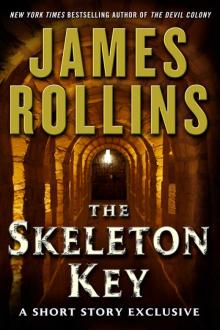 The Skeleton Key
The Skeleton Key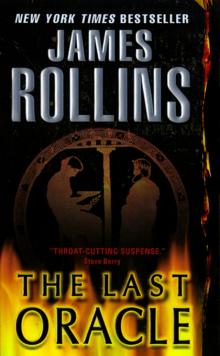 The Last Oracle
The Last Oracle The Judas Strain
The Judas Strain Black Order
Black Order Sandstorm
Sandstorm Ghost Ship
Ghost Ship The Devil Colony
The Devil Colony Subterranean
Subterranean The Doomsday Key
The Doomsday Key The 6th Extinction
The 6th Extinction Bloodline
Bloodline Jake Ransom and the Howling Sphinx
Jake Ransom and the Howling Sphinx The Midnight Watch
The Midnight Watch Map of Bones
Map of Bones The Demon Crown
The Demon Crown Deep Fathom
Deep Fathom Sigma Guide
Sigma Guide Kowalski's in Love
Kowalski's in Love Jake Ransom and the Skull King's Shadow
Jake Ransom and the Skull King's Shadow Excavation
Excavation The Seventh Plague
The Seventh Plague Altar of Eden
Altar of Eden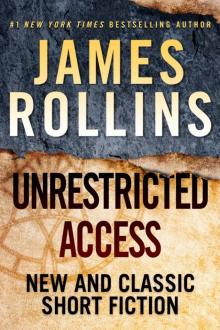 Unrestricted Access: New and Classic Short Fiction
Unrestricted Access: New and Classic Short Fiction Indiana Jones and the Kingdom of the Crystal Skull
Indiana Jones and the Kingdom of the Crystal Skull Crucible
Crucible The Eye of God
The Eye of God The Bone Labyrinth
The Bone Labyrinth The Last Odyssey: A Thriller
The Last Odyssey: A Thriller Unrestricted Access
Unrestricted Access Amazonia
Amazonia Blood Brothers: A Short Story Exclusive
Blood Brothers: A Short Story Exclusive Map of Bones: A Sigma Force Novel
Map of Bones: A Sigma Force Novel The Skeleton Key (sigma force)
The Skeleton Key (sigma force)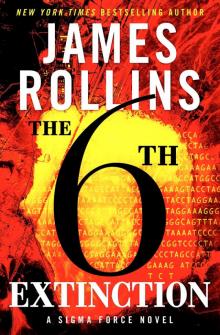 Sigma Force 10 - The Sixth Extinction
Sigma Force 10 - The Sixth Extinction Innocent Blood
Innocent Blood Map of Bones sf-2
Map of Bones sf-2 The Eye of God: A Sigma Force Novel
The Eye of God: A Sigma Force Novel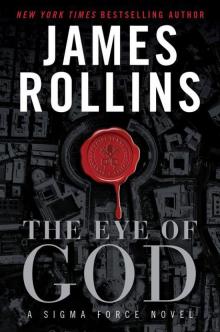 The Eye of God: A Sigma Force Novel sf-9
The Eye of God: A Sigma Force Novel sf-9 The Pit
The Pit Indiana Jones and the The Kingdom Of The Crystal Skull
Indiana Jones and the The Kingdom Of The Crystal Skull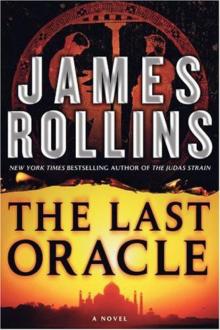 The Last Oracle (2008) sf-5
The Last Oracle (2008) sf-5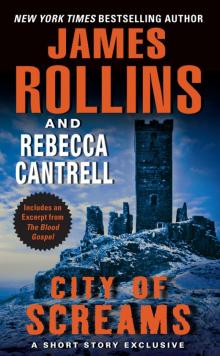 City of Screams
City of Screams The Doomsday Key and The Last Oracle with Bonus Excerpts
The Doomsday Key and The Last Oracle with Bonus Excerpts The Judas Strain sf-4
The Judas Strain sf-4 Blood Infernal
Blood Infernal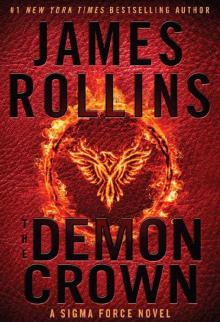 The Demon Crown: A Sigma Force Novel
The Demon Crown: A Sigma Force Novel War Hawk: A Tucker Wayne Novel
War Hawk: A Tucker Wayne Novel SANDSTORM sf-1
SANDSTORM sf-1 Bloodline: A Sigma Force Novel
Bloodline: A Sigma Force Novel Amazonia: a novel
Amazonia: a novel The Last Oracle: A Sigma Force Novel
The Last Oracle: A Sigma Force Novel City of Screams (the order of the sanguines)
City of Screams (the order of the sanguines)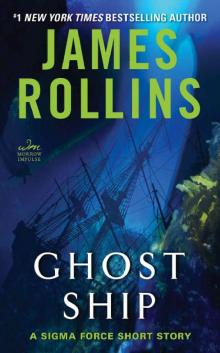 Ghost Ship: A Sigma Force Short Story
Ghost Ship: A Sigma Force Short Story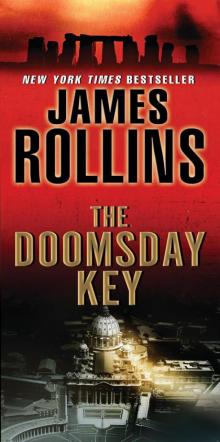 The Doomsday Key: A Sigma Force Novel
The Doomsday Key: A Sigma Force Novel